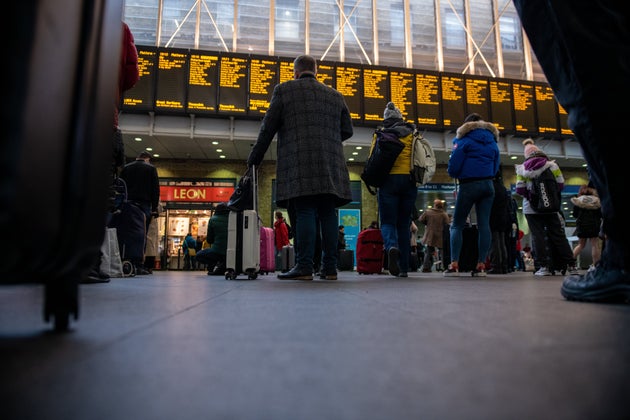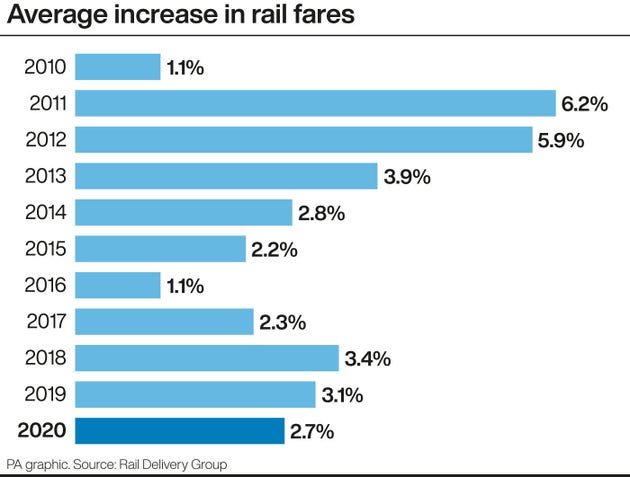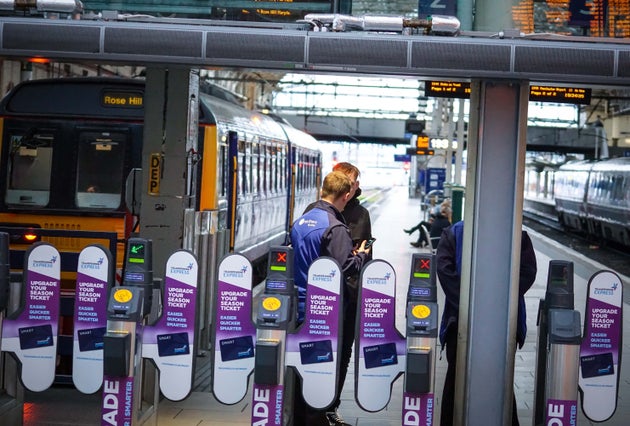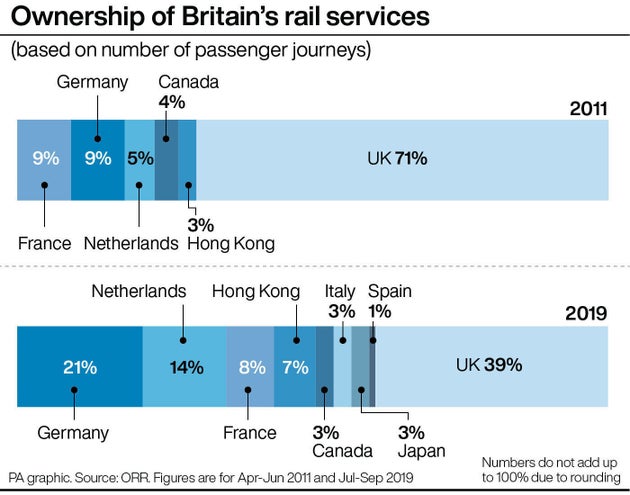
Rail fares have been hiked by an average of 2.7%, prompting one campaign group to warn of “another decade of misery” for passengers.
Some long-distance commuters saw the annual cost of getting to work increase by more than £100 on Thursday despite fewer than two-thirds of trains being on time last year.
Bruce Williamson, of pressure group Railfuture, claimed fares are “outstripping people’s incomes”.
“Welcome to another decade of misery for rail passengers,” he said.
“How on earth is the government going to meet its climate commitments by pricing people off environmentally-friendly trains and on to our polluted and congested roads?”
According to TUC data published by The Times, RPI-linked rail fares have risen twice as quickly as average wages over the past 10 years, with rail fares jumping by 47% compared to a 22% rise in average wages.

Network Rail data shows only 65% of trains arrived at their scheduled station stops within one minute of the timetable in the 12 months to December 7.
South Western Railway passengers suffered from strike action throughout December, while there was major disruption to Northern, TransPennine Express and West Midlands Trains services during much of 2019.
Rail, Maritime and Transport union analysis of company accounts for train operators and three major rolling stock firms showed they have paid out £4.4bn in dividends to shareholders over the last 10 years.
Among the routes where the price of annual season tickets has increased by a three-figure sum are:
– Reading to London (up £132 to £4,736)
– Gloucester to Birmingham (up £118 to £4,356)
– Glasgow to Edinburgh via any permitted route (up £116 to £4,200)
Robert Nisbet, director of nations and regions for industry body the Rail Delivery Group, said: “We know that no-one wants to pay more to travel, and rail companies have, for the third year in a row, held average fare increases below inflation while continuing to deliver investment in new trains and extra services that will improve journeys for customers.”

He added that 2020 will see 1,000 extra weekly services and 1,000 more carriages added to Britain’s rail fleet.
Meanwhile, transport secretary Grant Shapps unveiled a new fares trial on Govia Thameslink Railway services which will give passengers on certain routes the opportunity to buy better value tickets aimed at part-time workers.
A fund to support further trials across Britain will also be established by the government.

The Department for Transport will set out reforms of the railways in a white paper, responding to recommendations of the government-commissioned Rail Review led by former British Airways boss Keith Williams.
It was due to be published in autumn 2019 but has been delayed until this year due to the general election.
Shapps said: “This government will improve the railway system to ensure the focus is always on putting passengers first.
“This commitment begins with the launch of innovative fares trials, to help explore the benefits and costs of a clearer, more flexible and fairer fares system.”
Why does the cost of train travel increase every year?
It has been the policy of successive governments to switch the burden of funding the railways from taxpayers to passengers.
How much more expensive have train fares become?
Office of Rail and Road figures show that between January 1995 – around the time the network was privatised – and January 2019, average fares increased in real terms by 21%.
This year’s rise is 2.7%.
When are fares increased?
Prices rise on the first working day of every new year.
Who decides how much they go up by?
Increases in about 45% of fares are regulated by the UK, Scottish and Welsh governments. The rest are decided by train companies.
Which fares are regulated?
Season tickets on most commuter routes, some off-peak return tickets on long-distance journeys and tickets for travel around major cities at any time are regulated.
How is the cap on the rise in these fares calculated?
Most rises are pegged to the July Retail Prices Index (RPI) measure of inflation, which was 2.8%.
Where does the money go?
The Rail Delivery Group says 98p of every £1 spent on train fares goes towards running and maintaining services.
Is there any way of avoiding the fare rise?
Savvy commuters renewed their season tickets in the days before Thursday’s increase.
Any other tips on limiting the cost of train travel?
Passengers can save money by getting a railcard, travelling off-peak and booking in advance, although these options are not available for many journeys, particularly those made by commuters.

